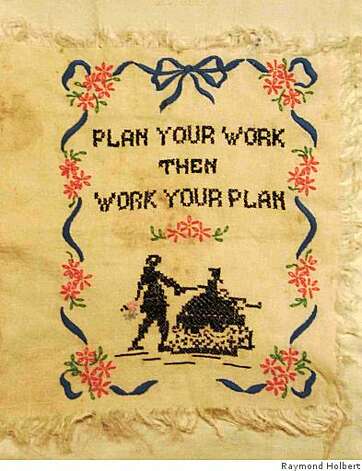An older piece from the Christian Science Monitor. A recent trip to a produce market reminded me to post this.
My random acts of kindness versus talk-radio-type rudeness
In my neighborhood, I've found that even small gestures have made a big difference.
By Susan DeMerssemanNOVEMBER 13, 2009
BERKELEY, CALIF. —
This fall's trio of outbursts (from Rep. Joe Wilson, singer Kanye West, and tennis star Serena Williams) brought the topic of civility front and center.
Like bad weather, everyone complains about rude behavior. But unlike bad weather, we can actually do something about it. Right?
I have started a small-scale experiment to see if one person can change the public tone.
My proving ground is a popular produce market in my neighborhood. You might think it would attract a lot of people seeking health and harmony.
Not so much. A grumpier, more sour crowd would be hard to find. Maybe it's the narrow aisles or the limited parking, but the people who shop there are often very cranky.
So as a quiet mission I sometimes see if I can turn the tide just a little during my regular shopping trips. It makes the long lines and narrow aisles more tolerable when I have this secondary mission.
I start with simply trying to keep a pleasant expression. I give other shopping carts the right of way. And I offer sincere compliments.
One day I told an older lady how much I admired her beautiful white hair. Her big smile and "Oh my gosh, you made my day" response reminded me how little it takes.
This small exchange transformed the tone of each of our trips to the market. This type of change is possible in almost any setting, and with remarkably small gestures. Even if I haven't been able to spread mass goodwill, at least I am not part of the problem.
What does it say about our society when the considerate, polite gestures have become out of the ordinary? We have become too casual with our own manners. If more of us were doing things, even small things, to sweeten the social stew, those people who are bitter or sour would stand out as unnatural more. And that could encourage more polite behavior.
Some people say that good manners render one less competitive in the workforce. On the contrary, there is great power in good manners. Even teaching small children how to use "please" and "thank you," along with other little habits, will open opportunity and instill a pattern into adulthood.
As a psychologist, I have worked in communities where social skills and the ability to reframe a potential conflict can be life saving factors for youngsters. But even when it isn't a matter of life and death, the ability and willingness to express respect can make our own lives much better.
I admit it is disappointing when courtesy is met with an entitled response – or no response. There are times when driving that I'll stop or pull over to let another car pass, and get nothing – no acknowledgment from the other driver. It makes me want to yell at the top of my lungs, in the most sarcastic way I can "You're welcome!" (OK, I have done that a few times). But that kind of response accomplishes little. What do I gain? It certainly doesn't make me feel like a winner.
When my son was a teenager, he liked to dress as though he had just lost a hundred pounds and hadn't bothered to buy new clothes. One day, he and I were crossing the street together and a driver waiting for us pointed to him and made a rude gesture.
Instead of what might have been the automatic response, I put my arm around my goofy looking son as if I were the proudest mom in town and gave the thumbs up sign to the driver.
That counterintuitive response helped reframe the situation, and rather than leave a bitter taste, it felt good. The driver's confused expression was a satisfying reaction. And it helped my son see the power of a little good.
There's a church song that goes, "Let there be peace on earth, and let it begin with me." Maybe we need a new version: "Let there be civility on earth, and let it begin with me."
Many people are ready to be part of something positive. Small actions repeated do make a difference. We can start today.
Susan DeMersseman is a psychologist and parent educator.

